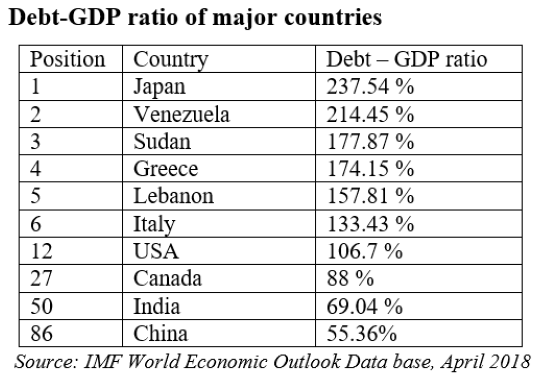
By Jomon Mathew
Kerala’s rising public debt: Is public debt a liability? The answer could be both yes or no, depending on the consent of the public and the change in power equations in the legislature. Every year, people sigh in concern over the increasing per capita public debt index. Yet, one isn’t clear whether it is a liability. Who will bear the economic liability of public debt, which is the amount the government gets on credit to carry out developmental activities as promised? Does public debt extend beyond economics to an expanse of social science?
Let me ask a simple question to those who take up cudgels against the Kerala government for high public debt. Do we not build houses using bank loans? Is that not debt? Why don’t we plan for building a house 15-20 years later after having secured necessary funds, instead of depending on bank loans? It is clear that we like to acquire a better standard of living right now, even though under debt, than a better life scores of years later. Buying cars or motorbikes using loans also stem from human interest for comfortable travel and transportation.
The government and society are made up of a large number of individuals who care to nurture and materialise dreams in present than in future. Then, how can the government which uses loans to fund development work with insightful outlook for decades can be blamed? This article points at the social side of debt, whether that be of a person or a government.
READ I Covid-hit Kerala economy struggles to stay afloat
The public debt debate
Until 1930s, the governments had taken up only policing, while having had left the market to run on its own terms (laissez faire). But the great financial crisis of 1930s exposed the limitations of free market, and strengthened the idea of government being a key player in market regulation. By 1936, Keynesian economics became popular and monetary systems under government modulation and regulation came into being. The working of the economy came under the control of state treasuries.
The founding of funding institutions such as the World Bank and the IMF helped governments in getting more funds which, in turn, gave new dimensions to acquiring loan amounts. The governments adopted Keynesian techniques to overcome the financial crisis in 2008. Through stimulus and booster packages during recession or similar crises, the governments channelled money to the market to avoid a collapse. Union and state governments have channelled amounts taken on loan in the form of different packages during the period of Covid-19 which they persist with.
The annual report of Reserve Bank of India for 2020-2021 deserves close attention. When lockdown measures were put in place in March 2020, the RBI, as part of its monetary policy, reduced interest rates and repo rates, and attempted to activate the market by channelling money through banks. Unfortunately, the measures initiated by the RBI did not have a major impact.
It is clear from the RBI report and the market response that the fiscal policies by the governments prove fruitful during crisis than monetary policy measures by the central bank. The packages were able to relay money easily towards people and to stop the economy from falling into a stage similar to economic depression. Thus, the logic, relevance and exigency of government expenditure is clear.
READ I Uncertain future: Can NFTs survive the Cryptocurrency Bill
Kerala’s growing public debt
The public debt index of Kerala is indeed on the rise, thanks to the RBI increasing the credit limit during Covid-19 crisis. Kerala has also been successful in finding funds through KIIFB, under which projects worth Rs 54,391 crore are sanctioned till date. The discussions on the Thiruvananthapuram-Kasaragod semi high-speed rail (SilverLine) project indicate a probable increase in Kerala’s public debt in the near future. As per the Kerala Budget 2020-2021, the state’s public debt is 30.1% of state income (GSDP).

Compare this to the national income to debt ratio of different nations listed on the public debt index. As per the IMF records, Japan ranks first with a debt-GDP ratio of – 237.54 %. Developed nations such as Italy, the US, Canada and the UK are in 6th, 12th, 27th and 29th positions, respectively. The position of India in the same index is 50.
It may, therefore, be assumed that the public debt problem of Kerala and India may not be as big as predicted. Public debt may be seen as an asset towards development if spent reasonably. For example, the amount spent for developing Technopark, Trivandrum has benefitted the Kerala economy in terms of developmental impact and standard of life.
The same could be expected in the coming years from development of national highways, coastal development, high-speed railway, educational and health investments and so on, all of which run on government borrowing. At the same time, the realisation of it being public debt as well as productive expenditure is necessary to keep the system under check. In short, public debt is not always a liability. It has dimensions of social progress that are beyond pure economics.
(Dr Jomon Mathew is Assistant Professor of Economics at University College, Thiruvananthapuram.)
